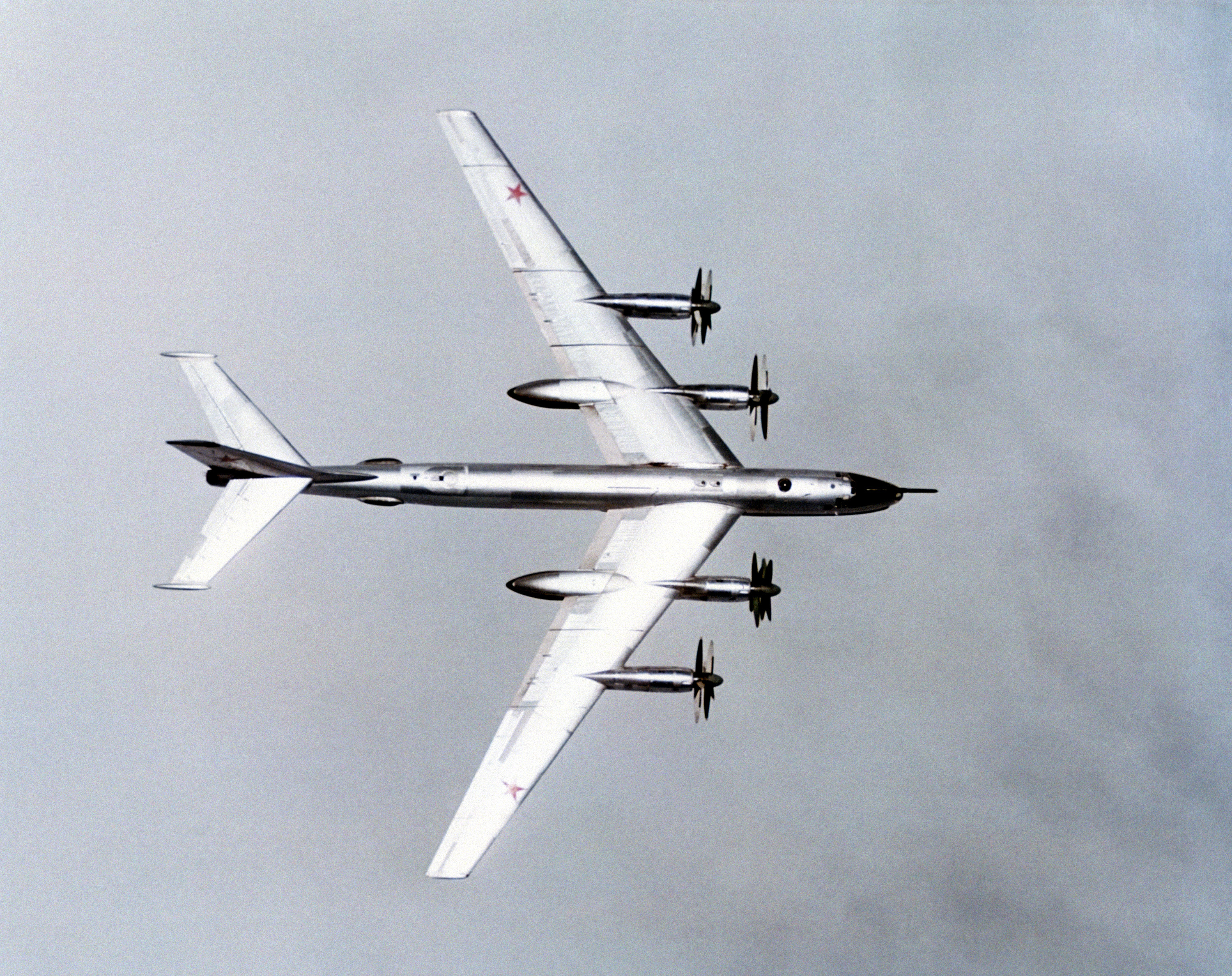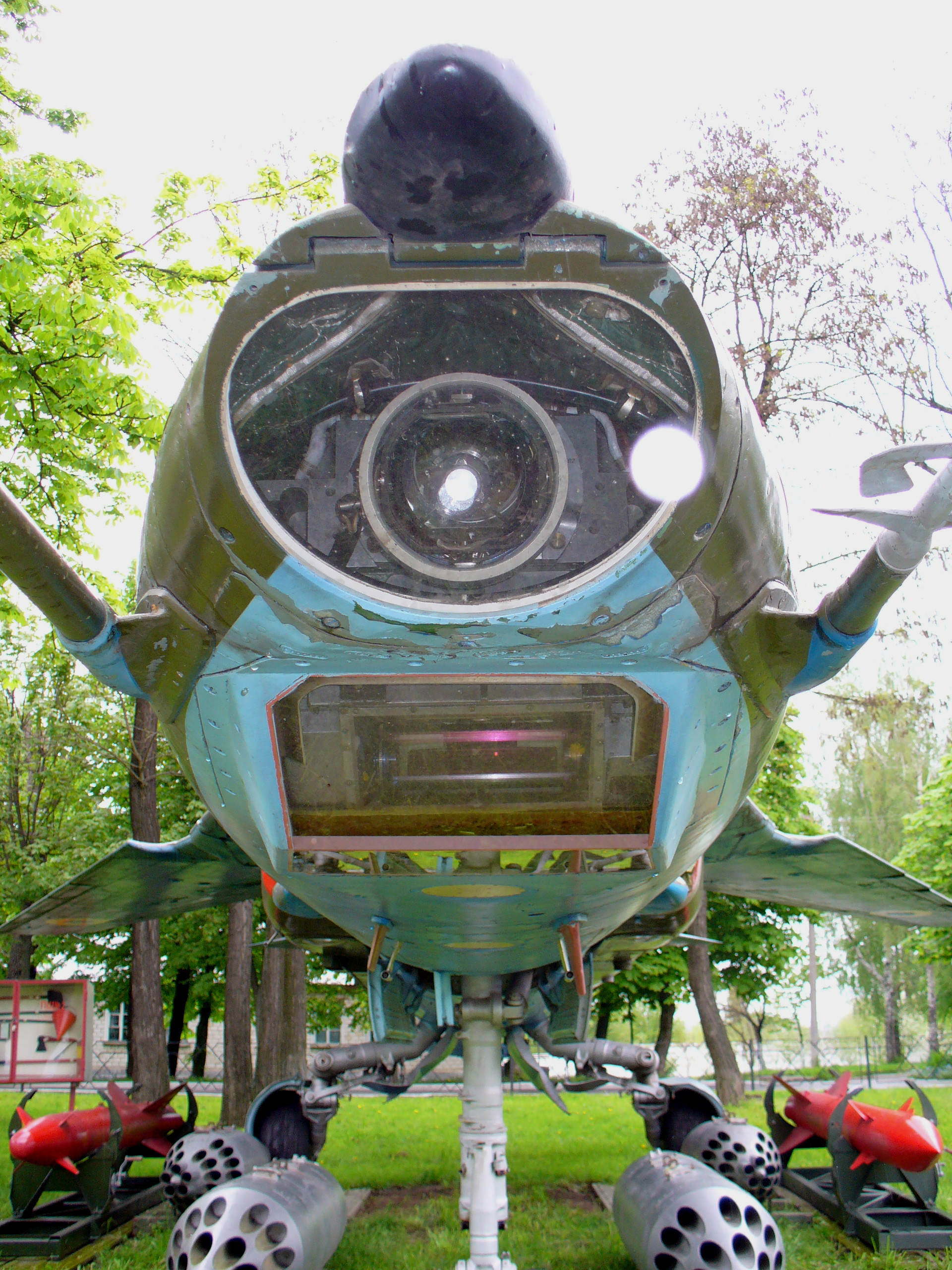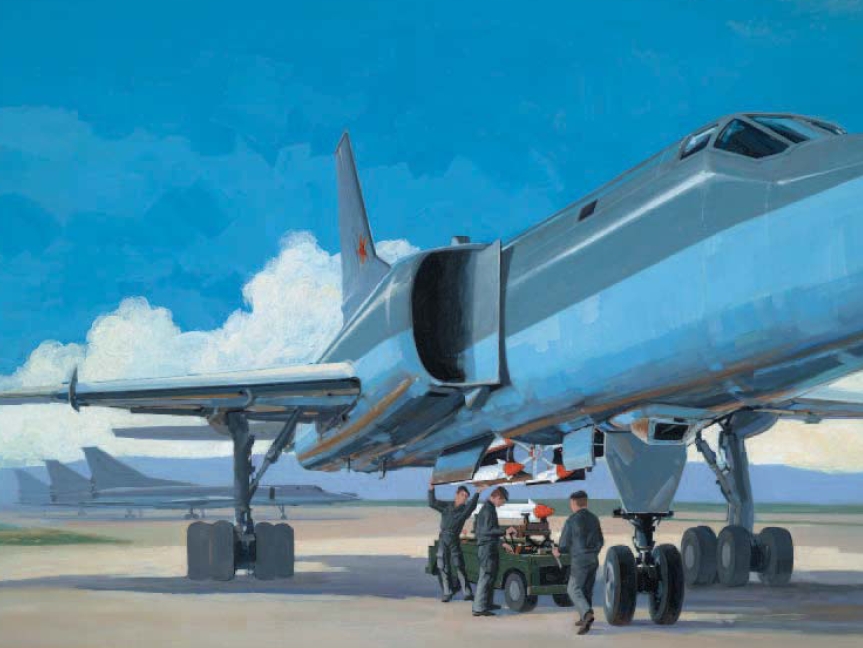|
Olenya (air Base)
Olenya (also Olenegorsk) is a major Russian Navy reconnaissance base, located on the Kola Peninsula 92 km south of Murmansk. As of 2020, units at the base were subordinate to the Long-Range Aviation branch of the Russian Aerospace Forces. The base and its staff settlement ( Vysoky, Murmansk Oblast), across Lake Permusozero from the city of Olenegorsk, are served by the Olenegorsk rail station (formerly Olenya station). Olenya has served as the headquarters for five MRAD (Naval Reconnaissance Air Division), and has hosted two reconnaissance regiments. Its 3500-meter runway is the longest on the Kola Peninsula, making it a key facility for intercontinental flights across the North Atlantic basin. The base is home to the 40th Composite Aviation Regiment as part of the 22nd Guards Heavy Bomber Aviation Division. History Olenya was first detected by US intelligence in 1957, and was listed as having a runway length of 3350 m (11,000 ft). The base served as a forward ... [...More Info...] [...Related Items...] OR: [Wikipedia] [Google] [Baidu] |
Olenegorsk, Murmansk Oblast
Olenegorsk (, lit. ''reindeer mountain'') is a town in Murmansk Oblast, Russia, located north of the Arctic Circle, south of Murmansk. Population: 25,166 ( 2002 Census); History The railway station of Olenya () was opened in 1916, with the construction of the Murman Railway. The station facilities, and the small settlement associated with the station were located to the east of the railroad. Their importance was somewhat increased in the 1930s, as Olenya became a junction for the railway branch to the newly built town of Monchegorsk some to the southwest. In 1949, work started on the iron ore strip mines and ore-processing facilities a few kilometers to the west of the Olenya station. At the same time, construction of a company town, originally also named Olenya, started between the rail station and the mines, to the west of the railway. In December 1949, it was granted work settlement status. By the March 27, 1957 Decree of the Presidium of the Supreme Soviet of ... [...More Info...] [...Related Items...] OR: [Wikipedia] [Google] [Baidu] |
Surface-to-air Missile
A surface-to-air missile (SAM), also known as a ground-to-air missile (GTAM) or surface-to-air guided weapon (SAGW), is a missile designed to be launched from the ground or the sea to destroy aircraft or other missiles. It is one type of anti-aircraft warfare, anti-aircraft system; in modern armed forces, missiles have replaced most other forms of dedicated anti-aircraft weapons, with anti-aircraft guns pushed into specialized roles. The first attempt at SAM development took place during World War II, but no operational systems were introduced. Further development in the 1940s and 1950s led to operational systems being introduced by most major forces during the second half of the 1950s. Smaller systems, suitable for close-range work, evolved through the 1960s and 1970s, to modern systems that are man-portable. Shipborne systems followed the evolution of land-based models, starting with long-range weapons and steadily evolving toward smaller designs to provide a layered defence. T ... [...More Info...] [...Related Items...] OR: [Wikipedia] [Google] [Baidu] |
Tupolev Tu-95
The Tupolev Tu-95 (; NATO reporting name: "Bear") is a large, four-engine turboprop-powered strategic bomber and missile platform. Maiden flight, First flown in 1952, the Tu-95 entered service with the Soviet Long Range Aviation, Long-Range Aviation of the Soviet Air Forces in 1956 and was first used in combat in 2015. It is expected to serve the Russian Aerospace Forces until at least 2040. A development of the bomber for maritime patrol is designated the Tupolev Tu-142, Tu-142, while a airliner, passenger airliner derivative was called the Tupolev Tu-114, Tu-114. The aircraft has four Kuznetsov NK-12 engines with contra-rotating propellers. It is the only turboprop-powered strategic bomber still in operational use today. The Tu-95 is one of the loudest military aircraft, particularly because the tips of the propeller blades move faster than the speed of sound. Its distinctive swept wing, swept-back wings are set at an angle of 35°. The Tu-95 is the only propeller-driven aircr ... [...More Info...] [...Related Items...] OR: [Wikipedia] [Google] [Baidu] |
Mikoyan MiG-27
The Mikoyan MiG-27 (; NATO reporting name: Flogger-D/J) is a variable-sweep wing, variable-sweep attack aircraft, ground-attack aircraft, originally built by the Mikoyan, Mikoyan-Gurevich design bureau in the Soviet Union and later licence-produced in India by Hindustan Aeronautics as the ''Bahadur'' ("Valiant"). It is based on the Mikoyan-Gurevich MiG-23 fighter aircraft, but optimised for air-to-ground attack. Unlike the MiG-23, the MiG-27 did not have widespread use outside Russia, as most countries opted for the Mikoyan-Gurevich MiG-23, Mikoyan-Gurevich MiG-23BN and Sukhoi Su-22 instead. As of late 2023, all Russian, Indian, Sri Lankan, Ukrainian, and Kazakh MiG-27s have been retired, bringing the type's service to an end. Design and development The MiG-27 shares the basic airframe of the MiG-23, but with a revised nose – nicknamed "''Utkonos''" ("Platypus") or "''Gena the Crocodile, Krokodil Gena''" in Russian service, first introduced on the MiG-23B. Dissatisfaction ... [...More Info...] [...Related Items...] OR: [Wikipedia] [Google] [Baidu] |
924th Naval Reconnaissance Aviation Regiment
9 (nine) is the natural number following and preceding . Evolution of the Hindu–Arabic digit Circa 300 BC, as part of the Brahmi numerals, various Indians wrote a digit 9 similar in shape to the modern closing question mark without the bottom dot. The Kshatrapa, Andhra and Gupta started curving the bottom vertical line coming up with a -look-alike. How the numbers got to their Gupta form is open to considerable debate. The Nagari continued the bottom stroke to make a circle and enclose the 3-look-alike, in much the same way that the sign @ encircles a lowercase ''a''. As time went on, the enclosing circle became bigger and its line continued beyond the circle downwards, as the 3-look-alike became smaller. Soon, all that was left of the 3-look-alike was a squiggle. The Arabs simply connected that squiggle to the downward stroke at the middle and subsequent European change was purely cosmetic. While the shape of the glyph for the digit 9 has an ascender in most modern typefa ... [...More Info...] [...Related Items...] OR: [Wikipedia] [Google] [Baidu] |
Teknisk Ukeblad
''Teknisk Ukeblad'' (''TU'', ) is a Norwegian engineering magazine. The magazine has its headquarters in Oslo, Norway. History and profile ''TU'' has appeared weekly since 13 April 1883 and was published by Ingeniørforlaget, now Teknisk Ukeblad Media jointly owned by three national professional associations of engineers and architects: the Norwegian Society of Engineers and Technologists (NITO, founded 1936), Tekna (founded in 1874), and the Norwegian Polytechnic Society (PF, founded 1852). On 24 June 2010 ''TU'' had a total circulation of 302,000 weekly copies. Corresponding publications are '' Ny Teknik'' in Sweden, '' Ingeniøren'' in Denmark and '' Technisch Weekblad'' in the Netherlands , Terminology of the Low Countries, informally Holland, is a country in Northwestern Europe, with Caribbean Netherlands, overseas territories in the Caribbean. It is the largest of the four constituent countries of the Kingdom of the Nether .... References External links Tek ... [...More Info...] [...Related Items...] OR: [Wikipedia] [Google] [Baidu] |
Tu-95
The Tupolev Tu-95 (; NATO reporting name: "Bear") is a large, four-engine turboprop-powered strategic bomber and missile platform. First flown in 1952, the Tu-95 entered service with the Long-Range Aviation of the Soviet Air Forces in 1956 and was first used in combat in 2015. It is expected to serve the Russian Aerospace Forces until at least 2040. A development of the bomber for maritime patrol is designated the Tu-142, while a passenger airliner derivative was called the Tu-114. The aircraft has four Kuznetsov NK-12 engines with contra-rotating propellers. It is the only turboprop-powered strategic bomber still in operational use today. The Tu-95 is one of the loudest military aircraft, particularly because the tips of the propeller blades move faster than the speed of sound. Its distinctive swept-back wings are set at an angle of 35°. The Tu-95 is the only propeller-driven aircraft with swept wings built in large numbers. Design and development The design bur ... [...More Info...] [...Related Items...] OR: [Wikipedia] [Google] [Baidu] |
Tu-160
The Tupolev Tu-160 (; NATO reporting name: Blackjack) is a supersonic, variable-sweep wing nuclear-capable heavy strategic bomber and airborne missile platform designed by the Tupolev Design Bureau in the Soviet Union in the 1970s. The aircraft is large, rather longer than a Boeing B-52 Stratofortress at 54 m, with wingspan 56 m when spread, 36 m when swept back. The Tu-160 is operated by the Long Range Aviation branch of the Russian Aerospace Forces. The Tu-160 entered service in 1987, the last strategic bomber designed for the Soviet Air Forces. It was built to serve as both a conventional and nuclear bomber. Production was stopped in 1992 following the dissolution of the Soviet Union in 1991, and the newly independent Russian and Ukrainian air forces inherited a fleet of 13 and 19 Tu-160s, respectively. Following protracted negotiations, eight Ukrainian Tu-160s were purchased by the Russian Federation while the remaining 11 were scrapped in the late 1990s u ... [...More Info...] [...Related Items...] OR: [Wikipedia] [Google] [Baidu] |
Tupolev Tu-22M
The Tupolev Tu-22M (; NATO reporting name: Backfire) is a supersonic, variable-sweep wing, long-range strategic and maritime strike bomber developed by the Tupolev, Tupolev Design Bureau in the 1960s. The bomber was reported as being designated Tu-26 by Western intelligence at one time. During the Cold War, the Tu-22M was operated by the Soviet Air Forces (VVS) in a missile carrier strategic bombing role, and by the Soviet Naval Aviation (''Aviatsiya Voyenno-Morskogo Flota'', AVMF) in a long-range maritime anti-shipping role. In 2024, the Russian Air Force had 57 aircraft in service, according to the 2024 Military Balance report by International Institute for Strategic Studies. However, in 2023, Ukraine's Main Directorate of Intelligence (Ukraine), Main Directorate of Intelligence estimated that Russia had only 27 aircraft in operable condition. Development In 1962, after the introduction of the Tupolev Tu-22, it became increasingly clear that the aircraft was inadequate in i ... [...More Info...] [...Related Items...] OR: [Wikipedia] [Google] [Baidu] |
Google Earth
Google Earth is a web mapping, web and computer program created by Google that renders a 3D computer graphics, 3D representation of Earth based primarily on satellite imagery. The program maps the Earth by superimposition, superimposing satellite images, aerial photography, and geographic information system, GIS data onto a 3D globe, allowing users to see cities and landscapes from various angles. Users can explore the globe by entering addresses and coordinates, or by using a Computer keyboard, keyboard or computer mouse, mouse. The program can also be downloaded on a smartphone or Tablet computer, tablet, using a touch screen or stylus to navigate. Users may use the program to add their own data using Keyhole Markup Language and upload them through various sources, such as forums or blogs. Google Earth is able to show various kinds of images overlaid on the surface of the Earth and is also a Web Map Service client. In 2019, Google revealed that Google Earth covers more than 97 ... [...More Info...] [...Related Items...] OR: [Wikipedia] [Google] [Baidu] |
Tupolev Tu-114
The Tupolev Tu-114 Rossiya (; NATO reporting name Cleat) is a retired large turboprop-powered long-range airliner designed by the Tupolev design bureau and built in the Soviet Union from May 1955. The aircraft was the largest and fastest passenger plane at that time and also had the longest range, at 10,900 km (6,800 mi). It has held the official title of fastest propeller-driven aircraft since 1960."FAI official database" ''''. Retrieved: 5 September 2007. Due to its |





